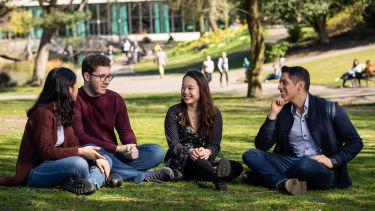BIE6436: Human Movement Biomechanics
Spring Semester
Optional on Programmes: MECT40, MECT50 and MECT53
Human Movement Biomechanics is needed to quantify the movement of an individual and understanding the key factors that affect internal loading and, thus, injury, tissue degeneration or regeneration, as well as motor control, energy consumption, and fatigue. This course aims to explore the experimental and computational techniques needed to achieve this purpose.
Prof Claire Brockett, Module Lead
Module Description
Biomechanics of human movement is the science concerned with the internal and external forces acting on the human body and the effects produced by these forces. This module will teach the students both the kinematics (the branch of biomechanics of entailing the study of movement from a geometrical point of view) and kinetics (the branch of biomechanics investigating what causes a body to move the way it does) of human movement and leverage on practical laboratory sessions to expose them to the most advanced technologies to measure and model the associated mechanical phenomena of interest.
Required Prior Knowledge
If you haven't already learnt about the following subjects, you will struggle to pass this module:
Use of MATLAB for data analysis. During the module we will be using this software to process the data obtained from the experimental human movement laboratory and therefore the ability to write scripts and use functions for analysis of data is required.
Teaching Methods
• Lectures and laboratory sessions (pre recorded if needed)
• Computer labs
• Problem solving sessions (including team work)
• Independent learning
Assessment Methods
• 100% Coursework:
Research proposal and data analysis, (approx 10 page report) that analyses a field of human movement by accurately describing the problem, summarising how it has previously been dealt with in the literature, and proposing an experimental and/or modelling approach to bring understanding to the topic, alongside analysis and presentation of experimental data captured within the human movement laboratory
Module Aims
• Teach the students how to apply the principles of classical mechanics to the study of human movement
• Provide the students with an understanding of the forces that act on the body and on its joints and segments during the execution of a given motor task
• Enable the student to choose adequate multi-body modelling techniques to estimate unmeasurable quantities
• Teach the students to critically assess existing measurement tools for the measurement of human movement and to understand the limitations of the relevant experimental and analytical techniques
• Teach the student how to design an experimental protocol to measure human movement
• Enable the student to interpret the data typically provided by a movement laboratory and analyse physiological and pathological gait and associated musculo-skeletal functional limitations
• Challenge students to apply their existing foundational understanding of engineering to a greater range and depth suitable for a research, clinical or industrial environment.

International postgraduate taught scholarships
We're offering scholarships worth up to £3,000 to international students joining the University to study a taught masters programme in September 2026.

